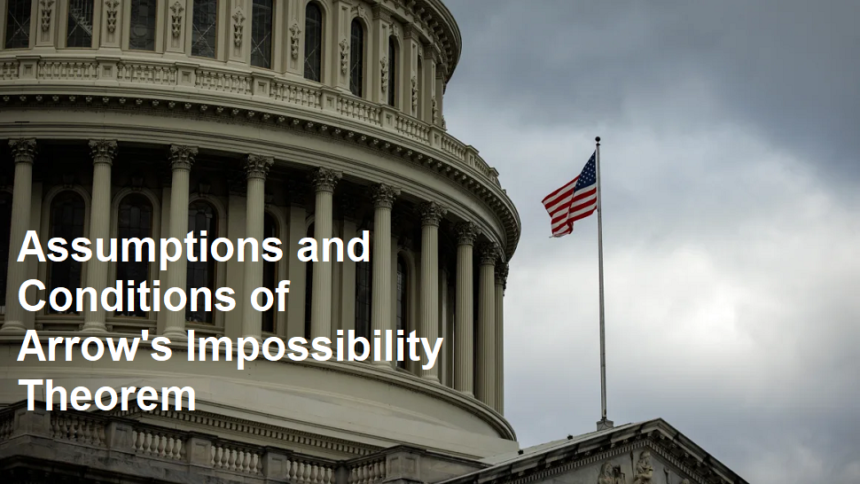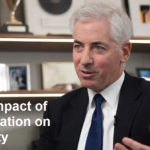Introduction to Arrow’s Impossibility Theorem
Collective decision making is a fundamental aspect of decision making in democratic societies. It is a process in which a group of individuals come together to make choices that affect their entire community. However, the concept of collective decision making is not without its challenges and paradoxes. One of these paradoxes is Arrow’s Impossibility Theorem, whose international term is Arrow’s impossibility theorem, which states that it is impossible to design a voting system that meets a desired set of criteria.
The name Arrow’s impossibility theorem is taken from the name of the creator of this theory, namely American economist Kenneth Arrow, who first proposed it in 1950. Arrow’s work was a breakthrough at that time because it challenged the general assumption that there was a perfect voting system that could accurately reflect a person’s preferences. group. With this theorem, Kenneth Arrow succeeded in showing that any voting system must make compromises and trade-offs, which makes it impossible to satisfy all the desired properties simultaneously.
The emergence of this theorem received great attention among experts and academics and triggered extensive research in the field of social choice theory. This theory highlights the limitations of long-practiced traditional voting systems and encourages researchers to explore alternative approaches to collective decision making. Arrow’s Impossibility Theorem continues to be the subject of study and debate by researchers, academics, and practitioners, shaping our understanding of the complexities involved in democratic processes.
Collective decision making involves reconciling the diverse preferences and opinions of individuals within a group to arrive at decisions that represent the wishes of the majority of that society. This process is essential for any society to function effectively, as it ensures that decisions are made in a fair and democratic manner. However, unfortunately collective decision making is not an easy task to carry out. This is often plagued by complexities and challenges arising from the conflicting preferences of group members and the interests of each individual.
Arrow’s impossibility theorem is a theory that highlights the difficulties inherent in collective decision making. This theorem asserts that it is impossible to design a voting system that satisfies a set of properties desired simultaneously by the group or society. These properties include the domains of universality (i.e. the ability to rank a set of alternatives), non-dictatorship (i.e. no single individual can determine the outcome), and transitivity (i.e. the ability to consistently compare alternatives). Arrow’s impossibility theorem basically shows that there will always be trade-offs when designing voting systems, and no system can fully capture the preferences and values of each individual, in other words no voting system is perfect.
Assumptions and Conditions of Arrow’s Impossibility Theorem.
To understand the implications of Arrow’s Impossibility Theorem, we must consider the assumptions and conditions that form the basis of this popular theorem. One of the main assumptions of Arrow’s impossibility theorem is that individual preferences are rational and consistent. This means that individuals have well-defined preferences and can consistently rank different alternatives based on those preferences. However, in reality, individual preferences can be subjective and can change over time, making it difficult for us to capture these preferences accurately.
Another assumption is that the voting system is unconstrained, which means that in collective decision making any combination of individual preferences can be considered. This assumption ensures that the voting system has a universal domain or is generally applicable, thus allowing for a comprehensive evaluation of alternatives. However, in practice, it is impossible to consider every possible combination, especially when dealing with a large number of alternatives or a large group of individuals involved in collective decision making.
Arrow’s Impossibility Theorem also assumes that the voting system is based only on individual preferences and does not take into account other factors such as social or economic welfare considerations. While this assumption is a way to simplify the analysis, it ignores the broader social implications of collective decision making.
Implementation of the Theorem
This theorem has had broad implications in policy thinking and institutional design. In practice, Arrow’s impossibility often arises when choosing between three or more different options. This theorem shows that no electoral method can avoid conflicts among individual preferences, presenting a serious challenge in developing fair and effective electoral systems.
Strengths and weaknesses
The advantage of Arrow’s Impossibility Theorem is that it provides a deep understanding of the complexity of collective decision making. This theorem opens eyes to the limitations of designing electoral systems that combine fairness and representation. On the other hand, the disadvantage lies in the uncertainty and impossibility of reaching a satisfactory solution. In other words, this theorem can be considered as an obstacle in finding an ideal solution to the problem of social selection.
Relevance in the Modern Context
In a modern context, Arrow’s Impossibility Theorem remains relevant in evaluating electoral systems and public policy. Implementation of this theorem can provide better insight in facing growing democratic challenges, such as political polarization and conflicts of interest. Therefore, critical thinking about this theorem is essential in designing institutions and policies that reflect the aspirations of society. Arrow’s Impossibility Theorem, although controversial, remains an important milestone in political and economic thought. As social and political dynamics change, the challenge of overcoming Arrow’s impossibility remains present. Further research is needed to develop more innovative and effective approaches to managing differences in preferences and reaching more satisfying collective decisions













